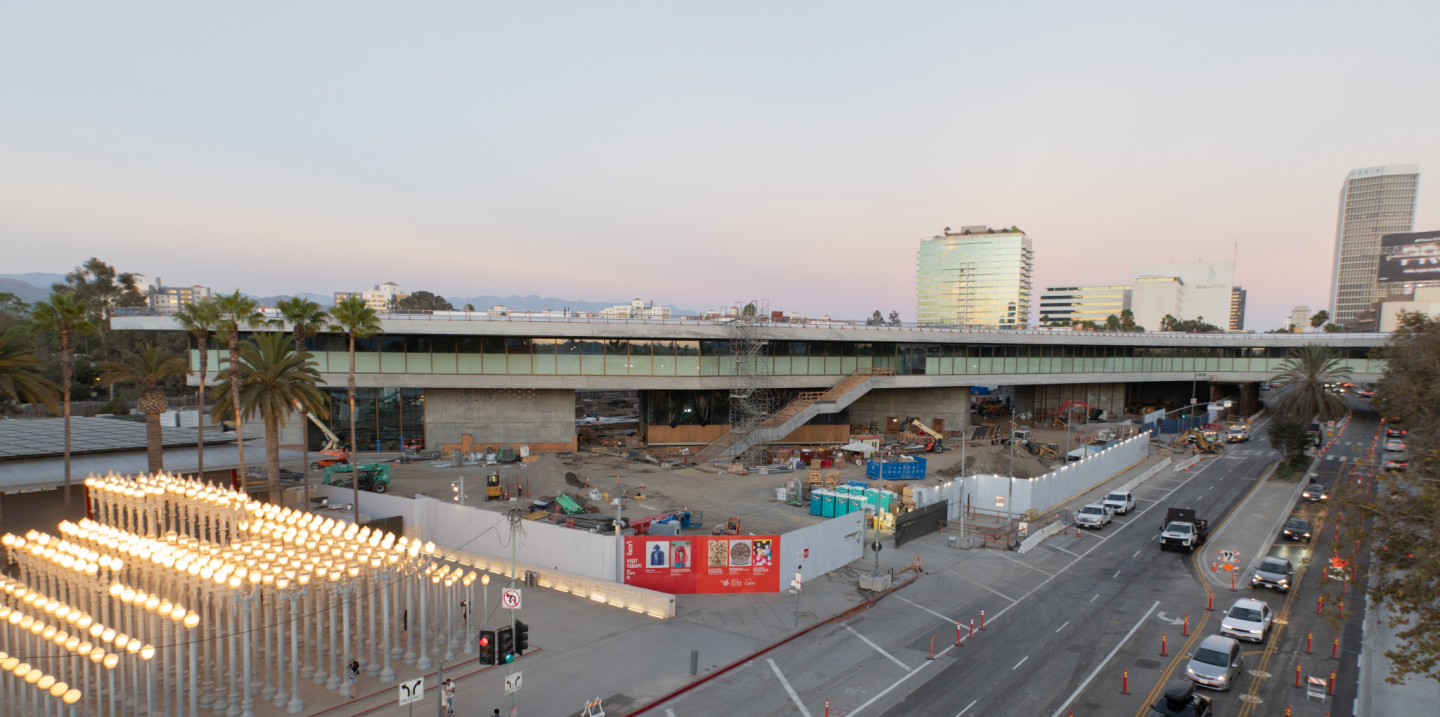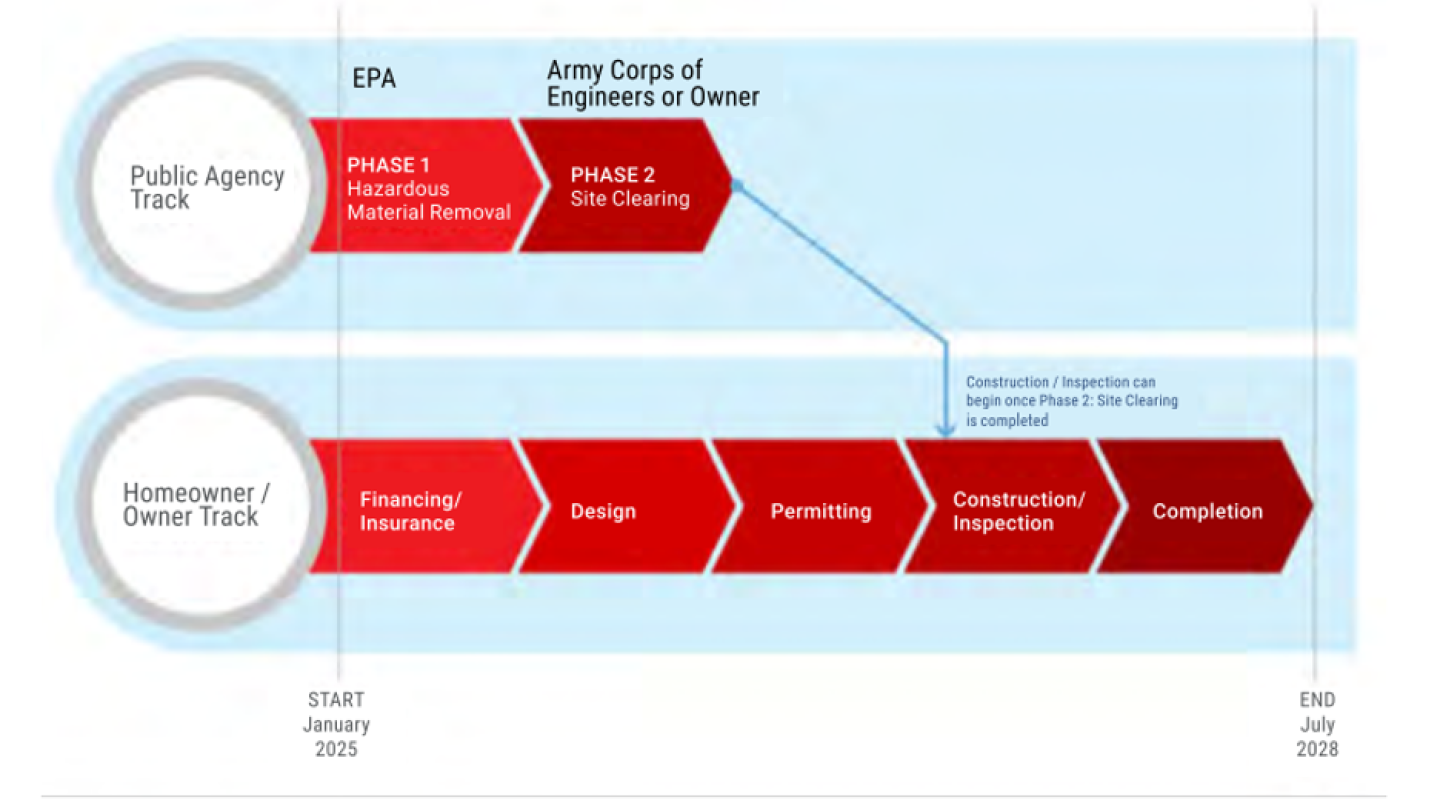In the aftermath of January’s wildfires, Los Angeles faces a stiff cocktail of challenges. Among the ingredients: tens of thousands of homes to build, a generous pour of labor shortages, and a splash of tariff-infused supply chain woes. Shake, don’t stir.
To keep these impediments from slowing recovery, the complex choreography involved in building thousands of homes all at once must be performed perfectly. Timing is key. First and foremost, the permitting reforms recommended by the authors of Project Recovery—reforms that L.A.’s mayor, Karen Bass, announced she is establishing—have to be enacted quickly.
In the meantime, experts say the construction industry should ramp up its recruiting efforts, neighborhoods should band together to bulk-buy materials, and the city should establish logistics centers in each fire zone to ease the flow of materials.
“The logistics of getting material, equipment, and labor to the jobsites is one of the most significant challenges . . . that could affect the productivity and costs of rebuilding,” says Steven Matt, CEO of MATT Construction, who co-led the labor and supply chain section of the Project Recovery report, developed by ULI Los Angeles, UCLA, and USC. The living document provides actionable recommendations to expedite recovery from the fires.
Labor challenges
“Construction labor has been a need in the L.A. region for a long time,” says Joss Tillard-Gates, director of community affairs at Clark Construction, who co-led the labor section of the Project Recovery report. “It isn’t just residential—it’s across the board.”
To meet the 2029 target for completion, about 3,000 homes per year need to be rebuilt until the deadline. That date is the earliest viable one, Tillard-Gates says, given the many steps—from soil testing and remediation to rebuilding neighborhood infrastructure—that must occur first.
Meeting that deadline will require 25 percent more construction workers. The bulk of the labor will be needed two to three years into the rebuilding process, he says. Although many workers can come from out of state, that labor pool increases costs, due in part to the cost of housing workers and paying their per diem. This expense could be compounded by drawing labor from commercial markets, as doing so comes with a premium.
An opportunity accompanies this challenge, however, according to Tillard-Gates. Reconstruction could encourage more individuals to join the construction industry, in which pre-apprenticeship programs take about 6–8 weeks. It’s also an industry where upward mobility—i.e., rising up through the ranks—is possible. “This is a window to remarket the construction industry as not just a trade but [as] a viable, long-term career,” Tillard-Gates says.
A neighborhood approach to supply chain management
Rebuilding isn’t just about the workforce. Securing materials early is critical.
Project Recovery’s authors suggest that neighborhood councils and homeowner associations band together to secure labor and other services for rebuilding, effectively communicate with various agencies as one voice, and lower supply costs with bulk discounts.
“It’s going to be critical for the neighborhoods to organize amongst themselves as best as possible,” Tillard-Gates says. “You always get a better price when you can buy more materials. The neighborhoods that organize, finalize designs early, and pool resources [are likely to] finish rebuilding faster.”
This approach worked well for homeowners who rebuilt after the 2017 Tubbs Fire in northern California. That fire destroyed more than 5,600 homes in Santa Rosa and the surrounding area. At the time, it was California’s costliest wildfire.
In the Coffey Park neighborhood alone, 1,500 homes were destroyed. Homeowners there banded together to share knowledge, fight fraud, procure services, and communicate effectively with officials. Thanks, in part, to this effort, the local government reformed the permitting process to speed up rebuilding for homeowners. It issued 300 permits per month at the peak of demand.
Within three years, 80 percent of the homes destroyed in Coffey Park were fully rebuilt and occupied.
Logistics, logistics, logistics
Project Recovery’s authors recommend that city officials create on-site rebuilding logistics centers in the Pacific Palisades, Malibu, and Altadena fire areas to coordinate worker parking, housing, material staging, and other parts of the process.
In addition to approving as many as 350 permits per month within 30 days of application, the centers should provide logistics planning to manage concurrent construction activity in each of the fire areas, which could involve as many as 40,000 workers at a time. The centers should also provide offices for inspectors and scheduling services for inspections, the report says.
Its authors recommend using existing infrastructure for temporary worker housing and material staging—think commercial parking lots and large student housing centers at UCLA during the summer months.
“There are a lot of variables at play,” Tillard-Gates says. “But once we get the ball rolling, that’s when we will start to see [rebuilding] happening at scale.”








